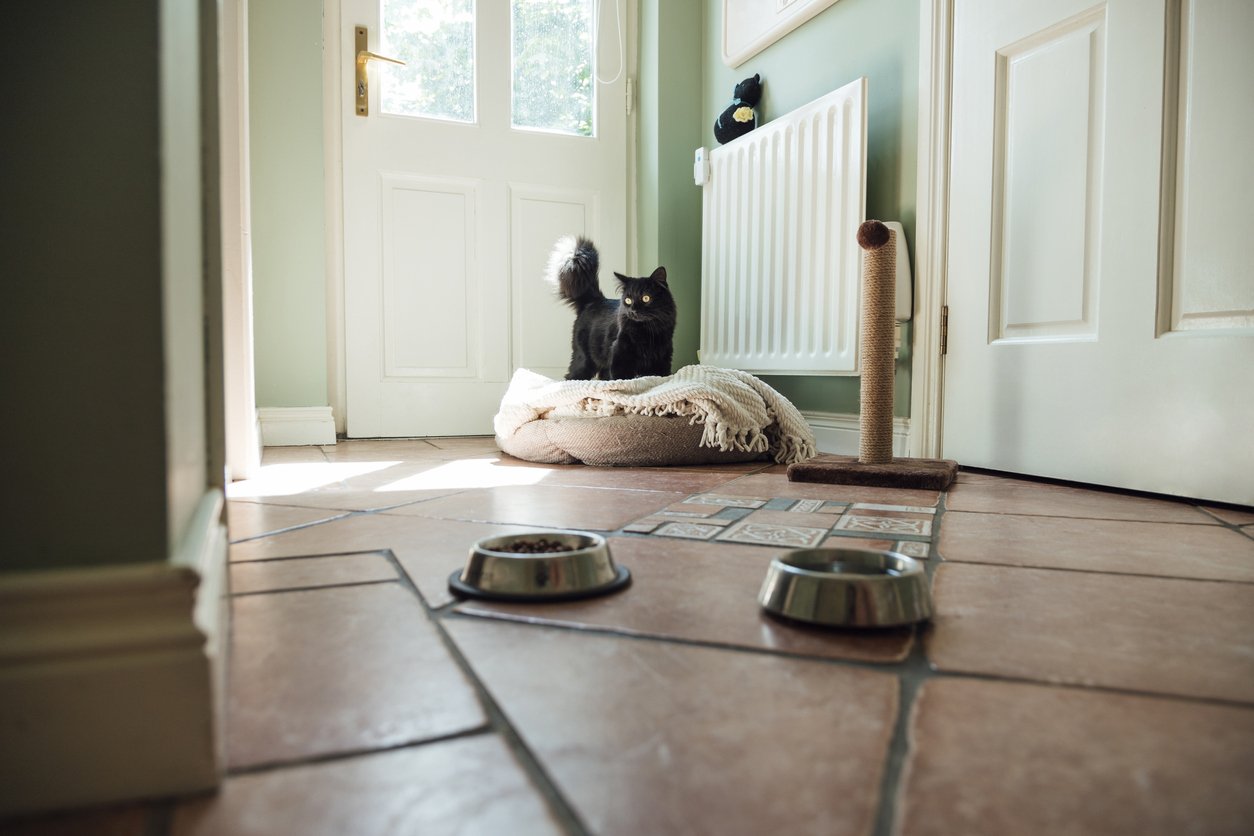Moving is a stressful process for many people. You have to pack up your home, take care of transferring all your services, and change your address. You also need to make sure that each member of your family, including the furry ones, is ready for the big change in their lives. Having a plan for how to move with a cat will make the process easier. Take a look at these critical tips for a cat-friendly moving process.
1. Prepare Your Cat for the Move Well Ahead of Time
For some cat owners, pets are their top priority as they plan a big move. Others, however, may struggle to juggle the needs of their furry family members. Make sure that you’re preparing your cat as well as possible before the move begins. You should:
Keep your cat on its normal schedule as much as possible.
Many cats do not like change. They prefer a set routine they can rely on. During a move, your routine often gets thrown out the window. Your cat may feel as though it’s living in the midst of chaos.
Try to stick to your cat’s schedule as much as you can. Continue to feed it at the same mealtimes, offer regular playtime, and be available for snuggles at your usual time. These simple steps can decrease your cat’s anxiety and make it easier for your cat to manage the move.
Visit your vet, if needed.
Are you sure your cat is up-to-date on important vaccinations? Make sure that you visit the vet before your big move. If you’re moving long-distance, especially overseas, you will want to be sure that your pet has all the vaccinations they need to make that move. This is also a good time to microchip your cat. You might even be able to ask your vet for recommendations for a new vet when you reach your new home.
Do you have a particularly anxious cat? Your vet may be able to give you medications or tips to help your furry friend cope with anxiety around the move, especially if you know that he often gets upset at change. If you’re considering anti-anxiety medication to keep your cat calm, test it out before the big day.
Buy a comfortable cat carrier and help your cat acclimate to it.
Consider how you’ll be transporting your cat and how long your cat will need to be in the crate as you plan out how to move with a cat. For example, are you just moving across town? If so, your cat may only need to be in the crate for one brief car ride. On the other hand, you might be traveling cross-country or internationally. Then, you’ll need to make sure that you meet airline recommendations for traveling with your pet. A long-distance move will also mean making sure that your cat has access to food, a water bowl, and litter box accommodations. You should also make sure their collar tag has your phone number, not your old home’s address.
Buy the crate well before the move and give your cat a chance to explore it. You may want to put in a few toys or a towel that smells like home and family to your cat.
Make plans for your cat.
In some moves, planning for how to move with your cat is as simple as loading him into the car along with the rest of the family. In other cases, you may need to make more complicated arrangements. These include planning for a plane trip or making sure that you can keep your cat in the hotel with you along the way. Make sure you know how your cat will get to his destination. Plan for him to travel in a crate or carrying case. The stress from the move can cause even the most mild-mannered pet to try to escape at the worst possible moments.
Pro Tip for How to Move With a Cat:
Consider boarding your cat during a local move. Nervous cats may do better with boarding for a few days at the vet or a pet daycare. This can help reduce stress and anxiety while you’re packing (and while movers are in and out). This also means they won’t have to spend any time in a hot car.
2. Know What You’re Doing on Moving Day
When moving day arrives, you want to be sure that your cat is safe and ready for the move. Moving house with a cat means that you must take your cat’s needs into consideration throughout the day. Make sure you have a clear plan for how to move with your cat just like you do for your human family members! Follow these tips:
Give your cat a light meal.
You may need to wake early to make it possible for your cat to eat before the move. Keep in mind that some pets will not eat while in their crate, but bring a portion of the cat’s food in a small bag, just in case.
Make sure your cat has access to fresh water.
You can either place water in the crate with your cat or, if your cat is prone to knocking over bowls or making a mess, try offering your cat water periodically throughout the day — when you take a rest break, for example.
Place your cat in his crate early in the day.
Cats are prone to running out the door or getting underfoot at the worst possible moment. On moving day, many people will be in and out of the house, with the door opening and closing constantly. Place your cat in his crate early in the day to help stop him from escaping.
Pro Tip for How to Move With a Cat:
Keep your cat in his crate. As a pet owner, it can be hard to see your cat distressed, especially if he does not like the crate or is an outdoor cat. However, keeping him in his crate prevents him from getting lost during your move.
3. Give Your Cat Time to Adjust to His New Home
Planning how to move with a cat includes making time for adjustment. When you arrive at your new home, start by keeping the cat in his crate or keeping him shut in a single new room while you unload the moving truck. Put your cat’s favorite toys in the room so he doesn’t get bored. Just like when you were loading the boxes in the first place, you will want to be sure that your cat can’t escape.
Pro Tip for How to Move With a Cat:
If you leave your cat in a closed room during the unpacking process, clearly label the door so it doesn’t get opened by mistake. You don’t want your cat to go running off in an unfamiliar new neighborhood!
How long does it take a cat to get used to his or her new home?
It takes an average of two weeks for a cat to settle into a new environment and for your cat’s stress levels to return to normal lows. As you plan out how to move with a cat, make sure you’re prepared for that long stretch of time. Make sure your cat’s mealtimes and routine are as consistent and low-stress as possible.
How do cats adjust to a new environment?
Cats need to explore their new environment, but don’t let them get overwhelmed. Part of a cat-friendly move is helping your cat adjust to the new space in increments. Knowing how to move with a cat includes knowing your cat’s personality. Some cats want to explore their big, new space as soon as possible. Others may adapt better if they have more time to get to know their new surroundings. Consider placing your cat in a single, quiet room for a few days, not just move-in day. Then you can open the door and let him explore his new space.
You may also want to make sure you thoroughly clean your new house before you let your cat out to wander around. This is especially important if the former owners had pets or you notice anything that could pose a danger to your cat.
Pro Tip for How to Move With a Cat:
Use the same litter box from your old home. Place your cat’s litter tray in its permanent home and introduce your cat to it as soon as possible. Try not to pile moving boxes around or on the litter box, even temporarily. This could lead to scent marking and cause your pet to use the bathroom on your possessions.
Planning how to move with a cat can cause a great deal of stress. With these tips, however, you can create a safer, happier move for your cat and your entire family. If you have another pet, such as a fish or a dog, make sure you create a separate pet-friendly plan to help them acclimate to their new home, too.
Additional Moving Resources:
Moving and packing guides
- How to Move a Couch
- How to Move a Mattress
- How to Move a Refrigerator
- How to Move a Piano
- How to Move a Pool Table
- How to Pack Shoes for Moving
- How to Pack Dishes and Glasses








